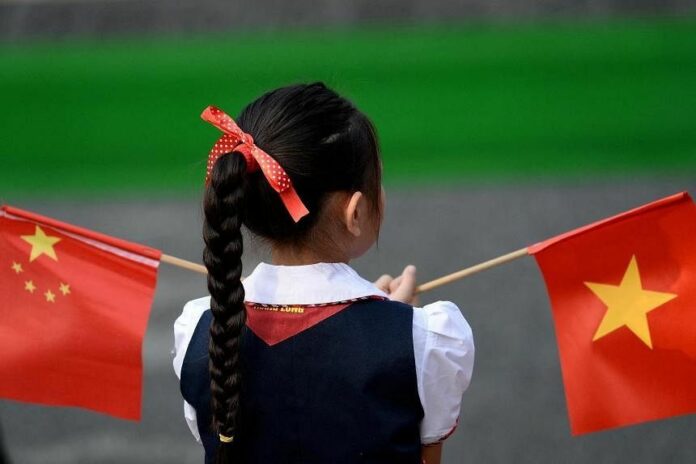HANOI, Dec 9 (Reuters) – Chinese investments in Vietnam have boomed this year in contrast to a slowdown in U.S. spending and trade, official data show, as the world’s two largest economies vie for influence in the strategic Southeast Asian country.
The manufacturing hub stretching along the South China Sea is increasingly a key assembling link in global supply chains that often rely on Chinese components and U.S. consumers.
U.S. President Joe Biden achieved an upgrade of diplomatic relations with the former foe in a visit to Hanoi in September, after a year of intense diplomatic efforts to elevate the United States to the same tier as China in Vietnam’s ranking.
China’s President Xi Jinping will travel to Vietnam next week with the aim of further deepening ties. He may agree to declare that the two countries share a common destiny, diplomats said, which could be interpreted in Beijing as a formal upgrade of diplomatic relations.
Advertisement · Scroll to continue
It is unclear which symbolic upgrade carries more weight, but in economic terms China appears to have had the upper hand so far, partly as a consequence of U.S. trade policy. Tensions between Washington and Beijing and various U.S.-led sanctions on China in recent years have encouraged Chinese investment in Vietnam.
Registered investment from China and Hong Kong combined rose to $8.2 billion in the first 11 months of this year, according to Vietnam’s official statistics, twice as much as in the same period last year when China had pandemic restrictions, making them the biggest investors in Vietnam.
U.S. registered investment instead has fallen to $0.5 billion this year from $0.7 billion in 2022, making it the 10th largest investor after Pacific offshore centre Samoa and the Netherlands.Reuters Graphics Reuters Graphics
Bilateral trade also dropped, as U.S. consumers grappled with a cost-of-living crisis this year and no tariff cuts were agreed during Biden’s visit.
Exports from Vietnam to the United States plunged 15% to $79.25 billion in the first 10 months of the year, Vietnam data show, and U.S. imports fell as well.
In the same period Vietnam’s exports to China increased by 5% to nearly $50 billion, although imports fell as Vietnam largely buys from Beijing components that are assembled for export to Western countries.
Despite strong economic exchanges, relations with China are complicated by disputes over boundaries in the South China Sea. Anti-Chinese sentiment is also common among Vietnamese people, and it leads to frequent protests, including one in 2018 against the creation of special economic zones that could have benefitted Chinese companies.



















